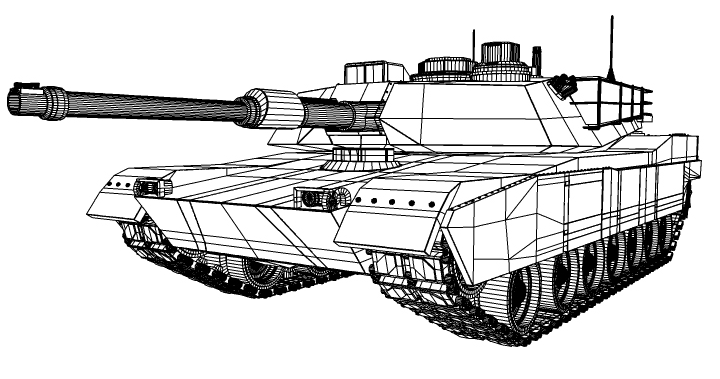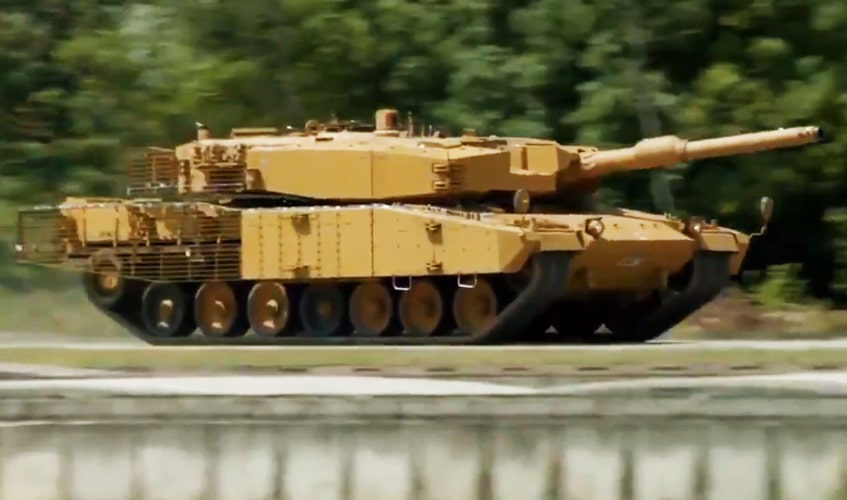This is what i found about their transmission problems, the news is from last year and is google translated.
The 3rd mass production project of the K2 tank has been controversial over the introduction of a domestic transmission.
S&T Heavy Industries developed a domestic transmission with government budget of 39.6 billion won and self-development cost of 26.9 billion won from 2005 to 2014. The 1500 horsepower class transmission passed field tests and road tests and was judged suitable. However, in 2017, it did not pass the durability evaluation process. The driving standard is 9600 km, but at 7359 km, a bolt was damaged. This is the background of the introduction of the'Hybrid Power Pack', which combines a German transmission with an engine developed by Doosan Infracore for the second mass production of the K2 tank .
S&T Heavy Industries decided to conduct transmission tests again for the 3rd mass production project with the Defense Acquisition Program Administration. However, there was a disagreement over the test method, and after all, it collapsed. It has also decided to use a hybrid power pack for the 3rd mass production business.
Source: https://biz.chosun.com/site/data/html_dir/2020/11/26/2020112602376.html
Edit: more info.
According to the content reported in the article on September 22, 2014 that the only domestic power pack was made, the performance of the Doosan-made power pack did not meet the ROC (operational requirements). 8 seconds is the standard for acceleration to 32km/h, but it recorded 8.7 seconds, and Doosan is in the process of unpleasing, saying that it has fallen to only 0.7 seconds. # As a bonus, it recorded 7.1-3 seconds with a German-made engine. The difference is about 1-2 seconds (…)[11] . Moreover, as will be described later, this 8.7 second record was made at an ammunition and no content-free tolerance weight! It will be slower when the contents are filled.
For reference, the acceleration problem is a very serious problem. From an unfamiliar point of view, it is only a difference in decimal points, but I can think that it has fallen unfortunately, but it is ten thousand words. In a battlefield situation where a difference in response speed of a few seconds can affect life or death, even a difference of only a few seconds can make a huge difference. Tanks do not continue to run, but stop and accelerate rapidly.In a situation where a tank battle is assumed in a narrow space due to a small open area, like in Korea, the sudden acceleration and deceleration ability during maneuvering has a relatively large impact on the likelihood of being hit.
In addition, the above ROC itself is also a very low standard compared to the times, which can be seen by looking at the specifications of the same generation overseas tanks. For example, the 61-ton M1A1 in the US is 6.8 seconds, and the 63-ton M1A2 SEP is 7.2 seconds.[12] is achieved, and as you know, the prototypes of these tanks are at the level of the 1990s technology. In addition, the black mark is 56 tons lighter than those of those tanks. In the case of the M1A1, it is not a design that focuses on bullet avoidance, but a design that focuses on armor protection, but it is low-level. Even the French AMX-56 Leclair , developed in the 90s, was the 6th[13] It is. Reference distance It is a level that is seriously lagging behind the global standards. In this article, it is said that it is excellent compared to the acceleration ability of K-1 series tanks, but the K-1 tank is a thing looking at 2 to 30 years since it was deployed, and it is embarrassing to call it 3.5 generation tank by global standards It is an acceleration performance enough to do.
In fact, there are also 3.5 generation tanks with an acceleration of 0-32km/h equivalent to 10 seconds. What is that? It is the Challenger 2 and the Merkabah . Basically, it is a tank that is more than 10 tons heavier than a black mark, and these are tanks based on the design idea of investing in defense and survivability without losing speed. It is ridiculous at the beginning that the ROC of the black mark, which weighs 50 tons and is designed for maneuvering warfare, is similar to the corresponding tanks made under completely different ROC standards.
29 October 2014. Eventually, the standard was lowered to 9~10 seconds!! # The standards in the manuals mentioned are those created in 1963 for the speed of the AT-3 new anti-tank missile, 115M per second. The vehicle 's acceleration performance was determined based on a manual made half a century ago ! Even North Korea treats the AT-3 as a second-class weapon.Even if it does not meet global standards, I don't know if it is at least suitable for an anti-tank weapon used by North Korea, a hypothetical enemy, but even that is difficult to meet. There was even an article about the death penalty.
In fact, this information came out when there was a rumor that the problem of the S&T transmission was not yet known and that the power pack was completely in charge of Doosan, so there may be some inaccuracies. Actually, the performance of the power pack does not come only with the engine.[14] Since there is a story that there are many problems with S&T transmission, it is not known whether it is a DV27K problem unless information about the DV27K+ Lenk transmission test comes out.
Source: https://namu.wiki/w/K-2 흑표/파워팩 논란#toc
The 3rd mass production project of the K2 tank has been controversial over the introduction of a domestic transmission.
S&T Heavy Industries developed a domestic transmission with government budget of 39.6 billion won and self-development cost of 26.9 billion won from 2005 to 2014. The 1500 horsepower class transmission passed field tests and road tests and was judged suitable. However, in 2017, it did not pass the durability evaluation process. The driving standard is 9600 km, but at 7359 km, a bolt was damaged. This is the background of the introduction of the'Hybrid Power Pack', which combines a German transmission with an engine developed by Doosan Infracore for the second mass production of the K2 tank .
S&T Heavy Industries decided to conduct transmission tests again for the 3rd mass production project with the Defense Acquisition Program Administration. However, there was a disagreement over the test method, and after all, it collapsed. It has also decided to use a hybrid power pack for the 3rd mass production business.
Source: https://biz.chosun.com/site/data/html_dir/2020/11/26/2020112602376.html
Edit: more info.
According to the content reported in the article on September 22, 2014 that the only domestic power pack was made, the performance of the Doosan-made power pack did not meet the ROC (operational requirements). 8 seconds is the standard for acceleration to 32km/h, but it recorded 8.7 seconds, and Doosan is in the process of unpleasing, saying that it has fallen to only 0.7 seconds. # As a bonus, it recorded 7.1-3 seconds with a German-made engine. The difference is about 1-2 seconds (…)[11] . Moreover, as will be described later, this 8.7 second record was made at an ammunition and no content-free tolerance weight! It will be slower when the contents are filled.
For reference, the acceleration problem is a very serious problem. From an unfamiliar point of view, it is only a difference in decimal points, but I can think that it has fallen unfortunately, but it is ten thousand words. In a battlefield situation where a difference in response speed of a few seconds can affect life or death, even a difference of only a few seconds can make a huge difference. Tanks do not continue to run, but stop and accelerate rapidly.In a situation where a tank battle is assumed in a narrow space due to a small open area, like in Korea, the sudden acceleration and deceleration ability during maneuvering has a relatively large impact on the likelihood of being hit.
In addition, the above ROC itself is also a very low standard compared to the times, which can be seen by looking at the specifications of the same generation overseas tanks. For example, the 61-ton M1A1 in the US is 6.8 seconds, and the 63-ton M1A2 SEP is 7.2 seconds.[12] is achieved, and as you know, the prototypes of these tanks are at the level of the 1990s technology. In addition, the black mark is 56 tons lighter than those of those tanks. In the case of the M1A1, it is not a design that focuses on bullet avoidance, but a design that focuses on armor protection, but it is low-level. Even the French AMX-56 Leclair , developed in the 90s, was the 6th[13] It is. Reference distance It is a level that is seriously lagging behind the global standards. In this article, it is said that it is excellent compared to the acceleration ability of K-1 series tanks, but the K-1 tank is a thing looking at 2 to 30 years since it was deployed, and it is embarrassing to call it 3.5 generation tank by global standards It is an acceleration performance enough to do.
In fact, there are also 3.5 generation tanks with an acceleration of 0-32km/h equivalent to 10 seconds. What is that? It is the Challenger 2 and the Merkabah . Basically, it is a tank that is more than 10 tons heavier than a black mark, and these are tanks based on the design idea of investing in defense and survivability without losing speed. It is ridiculous at the beginning that the ROC of the black mark, which weighs 50 tons and is designed for maneuvering warfare, is similar to the corresponding tanks made under completely different ROC standards.
29 October 2014. Eventually, the standard was lowered to 9~10 seconds!! # The standards in the manuals mentioned are those created in 1963 for the speed of the AT-3 new anti-tank missile, 115M per second. The vehicle 's acceleration performance was determined based on a manual made half a century ago ! Even North Korea treats the AT-3 as a second-class weapon.Even if it does not meet global standards, I don't know if it is at least suitable for an anti-tank weapon used by North Korea, a hypothetical enemy, but even that is difficult to meet. There was even an article about the death penalty.
In fact, this information came out when there was a rumor that the problem of the S&T transmission was not yet known and that the power pack was completely in charge of Doosan, so there may be some inaccuracies. Actually, the performance of the power pack does not come only with the engine.[14] Since there is a story that there are many problems with S&T transmission, it is not known whether it is a DV27K problem unless information about the DV27K+ Lenk transmission test comes out.
Source: https://namu.wiki/w/K-2 흑표/파워팩 논란#toc
Last edited:










